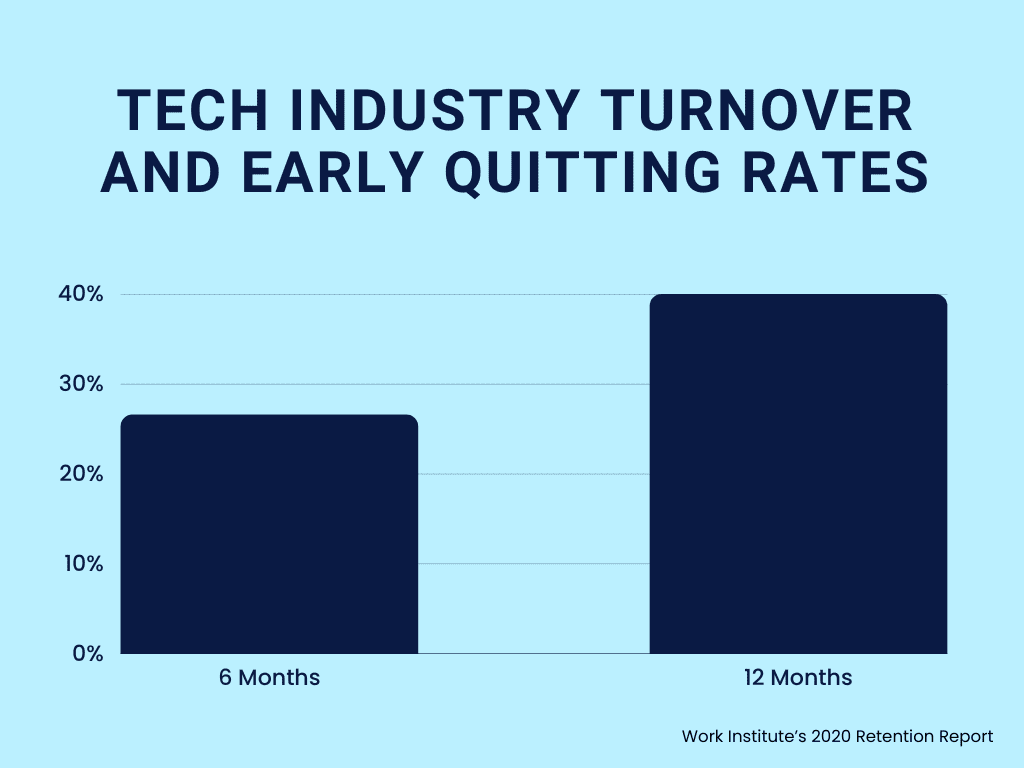Want to reduce IT turnover – hire the best candidate…not the best interviewer!
Hiring IT engineers can be a long and painful process, especially senior/niche engineers. Regardless of recent layoffs, the best engineers (and architects) have plenty of job options. So, finding that right technical and cultural fit can take time and focus.
According to a February 2023 LinkedIn report, the tech industry experiences the highest turnover rate (13.2%). And the Work Institute’s 2020 Retention Report revealed that nearly 40% of respondents who quit their jobs did so within the first year — with two-thirds of those leaving within the initial six months.

Not only is restarting the hiring process soon after bringing a new employee up to speed not fun, but it’s expensive: Gallup estimates that replacing a full-time employee can cost anywhere between half to two times the employee’s annual salary.
Having spent 20 years in IT recruitment, I’ve observed that the focus often tends to be on selecting the person who interviews the best rather than who’s the best candidate. Below are 5 data-proven best practices that will enable you to hire candidates who are better suited for long-term success.
1. Develop a comprehensive scorecard.
Basing hiring decisions on education, industry experience, and “gut feel” don’t necessarily translate to a successful hire. Qualifying and comparing candidates requires a structured and standardized process. To do this, create a scorecard featuring:
- Technical Skills: Assess proficiency in programming languages, tools, and relevant technologies.
- Problem-Solving Experience: Evaluate their ability to tackle challenges like those encountered in your organization.
- Cultural and DNA Fit: Employ behavioral questions to gauge how well their values align with your organization, considering aptitude and desire.
Rank answers to the above categories and compare scores. After this, feel free to go the touchy-feely route, but we tend to lean more heavily on the scorecard.
2. Check your bias at the door.
Most people make up their mind on a candidate in the first 30 seconds of meeting them. They then spend the rest of the interview trying to confirm this initial impression. But this bias is often a feeling that this is someone you’d like to hang out with — and not a good recipe for hiring success.
Start by recognizing your bias and then spending the next 10 minutes attempting to disprove it. If you do or don’t like them in the initial 30 seconds, try and convince yourself of the opposite — while covering the categories in the scorecard and comparing them to other candidates in a similar, structured faction.
3. Keep job details close to the vest.
Before providing every single detail about the job, ask the candidate to walk through what they’ve been doing. It limits their ability to focus on what you need most and should give you a better sense of what they’ve been focused on and want to do next.
Here are 2 questions that we swear by: Why are you looking for a new job, and what is your ideal job? In no time, the heartfelt answers will bubble to the surface, providing you with valuable insights.
4. Ask for a “quantifiable impact.”
When a candidate sums up what they were doing at a particular job, we always ask, “What would you consider your most quantifiable impact?” About 40% of candidates need us to repeat the question (not a good sign). Another 30% will tell us what they’re proud of, or achieved, but won’t mention a quantifiable impact. Then there are about 30% that will mention what they did, how they did it, and the quantifiable impact it had on their organization. They’re not only excited to tell us, but we’re excited to hear it.
5. Take candidates for a test drive.
Most interviews are theoretical discussions. To get a better sense of who a candidate is, we recommend having them spend a couple of hours with some of your existing team in a real live scenario. (Offering to pay them for their time may be an offer they can’t refuse.) A huge proponent of this advice comes from “Recruit Rockstars” author Jeff Hyman.
Clearly, hiring the ideal resource who becomes a productive, long-term employee involves various factors. Prioritizing the right-fit candidate ensures a stronger foundation for success, and implementing these strategies will help you achieve this goal more consistently.
